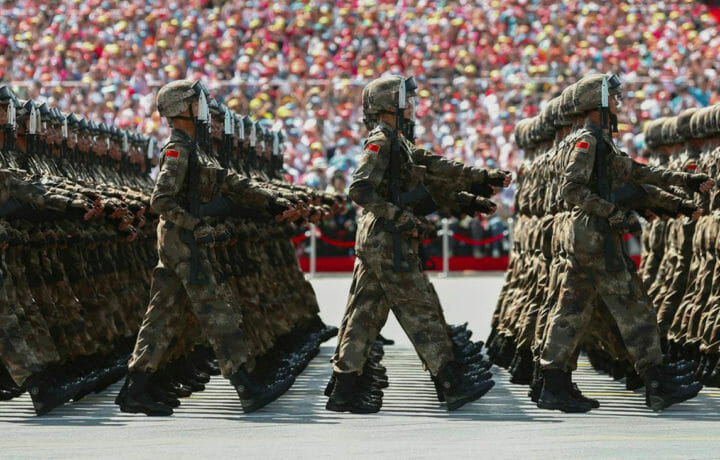This week has been one of revelations from mainstream media. The New York Times published a piece on “How China Uses LinkedIn to Recruit Spies Abroad” and The Atlantic published a piece “China’s Spies Are on the Offensive.”
The knee-jerk reaction to these pieces from the intelligence and defense communities might be “and water is also wet.” That would be short sighted. These pieces help reveal the threat posed by China to the general public – an audience who isn’t availed regular counterintelligence briefings.
That’s not to say there hasn’t been a voice speaking to the threat. Indeed, over the past four years, ClearanceJobs has shared the threat posed by China on numerous occasions, referencing information availed by the Defense Security Service, the FBI, the Department of Justice and the National Counterintelligence and Security Center.
And the threat isn’t just to the United States, the UK in 2015 issued a warning, Germany issued warnings in 2017, 2018 and 2019, France issued a warning in 2018 and the US counterintelligence entities has been warning personnel about the need to vet and verify all contacts they encounter on the internet (social networks) and not to overshare information about their work.
The perception that China has stepped up it’s Human Intelligence (HUMINT) collection efforts is just that: perception.
They have always been present, engaged and collecting.
Based on the cadence of prosecutions in the last 18 months, China must feel as if the U.S. DoJ has been unleashed. Perhaps they have. U.S. counterintelligence resources have clearly been invested and the fruits of those labors have begun to be harvested in the form of prosecutions and neutralization of China’s espionage activity.
Playing the long game
The West, of which the U.S. is an integral part, views the world in 90 day (quarterly) increments. Many who consider themselves to have expertise in China’s strategic goals note that China thinks in generational terms. An executive in Taiwan recently quipped to this writer, “the reality is, China with its 5000-year history, looks at a generation as the West may look at a week.”
China relies on the Ministry of State Security, The People’s Liberation Army, national key labs and industry leaders (e.g., Huawei) to acquire advanced technologies for less than it costs to develop those same technologies.
In 1986 China initiated Program 863. This program systematically identified technologies that were need to advance China into the modern technology era.
The China’s Ministry Science and Technology website (in 2019) describes Program 863 as follows:
Objectives of this program during the 10th Five-year Plan period are to boost innovation capacity in the high-tech sectors, particularly in strategic high-tech fields, in order to gain a foothold in the world arena; to strive to achieve breakthroughs in key technical fields that concern the national economic lifeline and national security; and to achieve “leap-frog” development in key high-tech fields in which China enjoys relative advantages or should take strategic positions in order to provide high-tech support to fulfill strategic objectives in the implementation of the third step of our modernization process.
This program has morphed over time, but the take-away in the above description is “leap-frog.”
The U.S. Commission on the Theft of American Intellectual Property in 2011 and every year thereafter, clearly points the finger at China as the prime nation state threat. The February 2019 IP Commission review warned, “The IP Commission applauds the administration for seizing the unique opportunity afforded by increased attention on U.S.-China trade relations to address China’s structural challenges that promote the theft of IP. This is the work of a generation, and the Commission urges our leaders to see it through.”
In 2010, the Federal Reserve Bank of Minnesota commented in a report on China’s restrictions on foreign firms in China, “We estimate that as of 2010, more than half of all technology owned by Chinese firms was obtained from foreign firms.”
Ask GE, Siemens, Corning, Google, T-Mobile, DuPont, Boeing and more, all who have seen their intellectual property find its way into China, used and monetized.
China targeting efforts
Targeting of cleared U.S. government personnel and those working in various sectors of strategic interest to China is ongoing.
While subversive use of technology is one means to acquire the information, the use of human sources has been around since time immemorial.
The use of social networks just one of the many ways China can reach out and touch the individual whom they are targeting. They are limited only by their imagination, as they have successfully used professional organizations, front companies, bogus contract work and more to wrap their tentacles around a target of interest.
As the adage goes, you don’t get to decide if you are targeted by China or any other hostile intelligence entity.
You get to decide how you act when contacted and how much information you share in public forums, like LinkedIn.
Read more on China’s efforts. Here’s a selection drawn from the ClearanceJobs corpus:
- DoD’s Military and Security Assessment of China
- Selling Secrets to China: Former State Department Employee Pleads Guilty to Conspiracy
- Is China Using Hacked OPM Data?
- China Is Targeting These 3 Americans As We Speak
- FBI Director: China Is Leveraging American Higher Education Against Us
- Insider Walks Trade Secrets Worth $1 Billion Out the Door on His Way to China
- Five Eyes Focused on Huawei as China Continues to Use Its Tech to Hack Into Other Countries
- China Sucks Secrets Out of France via LinkedIn
- China’s Use of LinkedIn for Espionage Should Put Security Officers on Alert
- Lawful Permanent Resident Arrested for Providing Controlled Technology to China
- China Steals U.S. Submarine Information
- Your Dating Site is Now Owned by China
- China‘s HUMINT Operations Against Defense Contractors in Full Swing
- China‘s Targeting Dossier of US Government Employees




